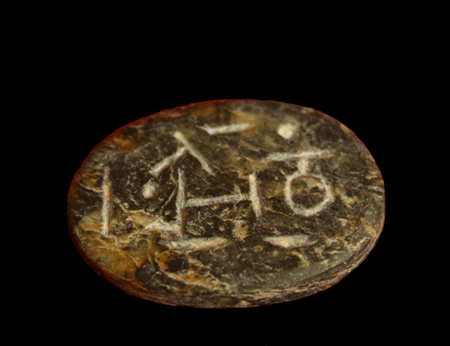Gnostic Serpentine Seal, 300 CE - 600 CE
Serpentine
1.25 x 1
FJ.1543
Gnosticism (from Greek gnosis, knowledge) refers to a diverse, syncretistic religious movement consisting of various belief systems generally united in the teaching that humans are divine souls trapped in a...
Gnosticism (from Greek gnosis, knowledge) refers to a diverse, syncretistic religious movement consisting of various belief systems generally united in the teaching that humans are divine souls trapped in a material world created by an imperfect spirit, the demiurge, who is frequently identified with the Abrahamic God. The demiurge, who is often depicted as an embodiment of evil, at other times as simply imperfect and as benevolent as its inadequacy allows, exists alongside another remote and unknowable supreme being that embodies good. In order to free oneself from the inferior material world, one needs gnosis, or esoteric spiritual knowledge available only to a learned elite. Jesus of Nazareth is identified by some (though not all) Gnostic sects as an embodiment of the supreme being who became incarnate to bring gnosis to the Earth. Gnosticism was popular in the Mediterranean and middle eastern regions in the first centuries of the common era, but it was suppressed[citation needed] as a dualistic heresy in areas controlled by the Roman Empire when Christianity became its official religion in the fourth century. Conversion to Islam greatly reduced the remaining number of Gnostics throughout the middle ages, though a few isolated communities continue to exist to the present.



